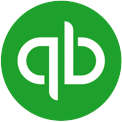What is a call to action?
You’re not sending that email just to send it. You want subscribers to take some sort of action after reading that message. That won’t happen on its own. You need to ask for it.
That’s where your call to action (CTA) comes into play. In your CTA, you should explicitly state the activity that you want your subscribers to perform, whether that’s reading your latest blog post, checking out a new product, or taking advantage of a deal you’re running.
To make the most out of your CTA, include only one in every email. You can’t expect subscribers to like your Facebook page, make a purchase, and leave a review all at once—that’s too big of an ask.
Each email should have just one purpose (i.e. getting people to complete a purchase), and the correlating CTA should be painfully obvious. Use larger font, an eye-catching color, and premium placement within the body of your email to make sure it can’t go unnoticed. Better yet, include it numerous places within your email, as gardening company, Michigan Bulb, did in a recent newsletter:
As Billy McCaffrey recommends in an article for WordStream, your CTA should start with a strong command verb that immediately elicits action. These verbs could include:
- Buy
- Order
- Shop
- Purchase
- Download
- Subscribe
- Request
- Find Out
- Visit
It’s just another small way to make it immediately clear what action your subscribers should be taking—rather than clouding that important piece with unnecessary language. A CTA that says “Order Now” is a lot stronger than, “Interested? Go ahead and place your order!”





